What Is Reach In Marketing? Why It’s Important?
There are a lot of advertisers trying to keep up with the year 2020. With recent affairs significantly influencing digital media patterns, it’s a year like no other, truly. This laundry list should sound familiar unless you have been living under a rock, or Norway, perhaps:
- Socio-political unrest, like mass demonstrations, aggressive street battles, and an imminent election.
- A cooling U.S. economy.
- Devastating wildfires and volatile weather phenomena.
- Our ancient, pugnacious nemesis, COVID-19.
The typical approach to build a brand marketing plan was to create a value proposition for your brand appropriately, think about who would be involved in it, and then reach certain individuals through marketing messages. But this plan relies on the fact that you really know who the brand would be involved in. Smart marketers leverage digital’s broad scope to reach people outside their preconceived focus ranges to understand them.
It is important to know what is reach in marketing. It is a strong tool for your strategy. This article will provide essential information and make comparisons where relevant.
What exactly is reach in marketing?
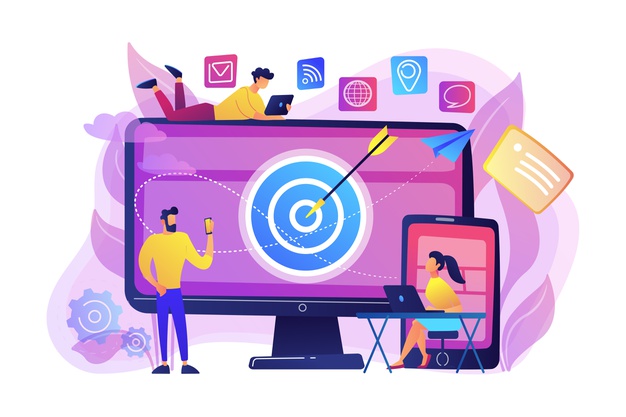
The ordinary marketer wants to know hundreds and hundreds of complexities. What are the new trends, what goods are driven by influencers, and most notably, how does politics play into customer buying patterns today?
Since the customer environment is constantly evolving, to ensure that they successfully relay your message and retain new prospective consumers, it is necessary to quantify your marketing efforts.
This is where the scope of the ads gets into action. Essentially, for the initiative, the marketing scope is the total amount of future clients you will reach.
You may need to remember, though the fact that individuals really don’t pay attention to advertising as they used to. People are staring at their phones, chatting to each other, going to the toilet, having a snack during commercials, etc. So is it possible to say that your ad is being watched by 16.5 million people? Oh, no. Yet you have, at least, a very vague estimation of how many people might have seen it.
And that’s the tricky part of marketing scope, estimating the right figure, actually.
It might sound confuse. So we can briefly say that what is reach in marketing and what is not?
Reach in marketing is: The approximate number of possible customers who may see a unique campaign or promotional channel is market penetration. This helps you decide if a marketing strategy’s risk is worth the potential clients it might attract.
For example, the consumer impact is the number of individuals who would watch the channel as your ad airs if you wish to buy a promotional spot on television. When you’re advertised in a publication, the number of people who can purchase the magazine is the scope of the sale.
Reach in Marketing is not: Market penetration is the approximate amount of potential clients who will see a particular advertisement or advertising platform. This helps you determine if the future buyers it could draw are worth the expense of a marketing campaign.
The audience influence is the percentage of viewers who will watch the channel when the ad runs if you were to buy a tv advertising advertisement. When you’re featured in a book, the distribution range is the number of customers who will buy the magazine.
Different types of reach in different marketing platforms
Social media marketing represents the marketing trend to move from traditional marketing to modern methodology using digital tools and platforms. As a result, you should explore the term and what is reach in marketing on these platforms.
Facebook reach
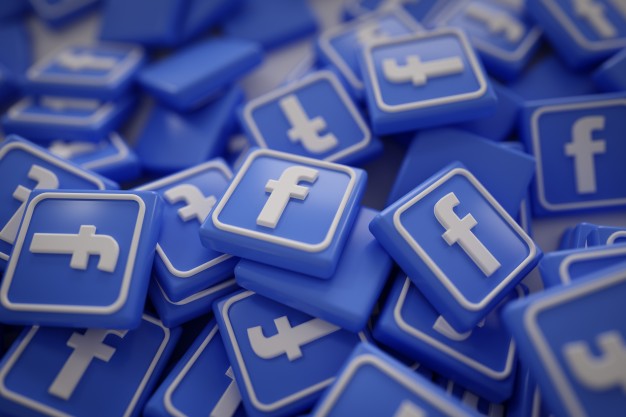
Let’s start with the very fundamentals: the meanings. According to Facebook, reach is the number of unique users accessing their screen for any material from your Facebook profile or your page. So in basic terms, the number of Facebook users who have come into contact with your Facebook company.
The meaning alone is clear. The fact that scope is assessed in 1-day, 7-day, and 28-day intervals is what makes matters a little more nuanced.
For instance:
- The user will be counted once on day 1 and once on day 2 if a user sees your content twice in one day and then twice the next day and you want to show reach in 1-day increments;
- If you want to display the 7-day or 28-day set, the same user will be counted only once during the 7-day and 28-day cycles, respectively, regardless of the amount of times their page form is used.
It is a good start to learn how to measure Facebook reach, but it is also important to know the distinctions between the various forms of reach:
- Post reach is the cumulative amount of individuals in their Facebook newsfeed who saw a specific Facebook post from your page;
- Page reach is how many individuals have reached their feeds for all of your material.
It is important to further classify all of these forms of scope into 3 categories:
Organic Reach
Thanks to the Facebook algorithm, this is the range that you get for free. It means your followers seeing your content as you share it in their feeds, people seeing your photos and albums, or users who see your profile in their feeds.
By figuring out when your audience is the most engaged and moving on increasing your interaction, you will improve your organic scope.
Viral Reach
Viral impact consists of users who, thanks to a third party, have seen your content, as opposed to directly from your website. So for starters, they will be counted as viral reach if one of your fans posts your post and their Facebook friends see it. High viral reach is a symbol of the audience being incredibly active and eager to serve online as your ambassadors.
Paying Reach
This group is very self-explanatory and consists of all people who have seen your content from ads on Facebook (aka your target audience).
By improving your Facebook marketing settings, you can expand your paying reach: playing with targeting and bidding, building new target markets, and exploring several innovative ones. Working with Facebook reach you will get to know more what is reach in marketing and gain the profit via this channel.
Twitter reach
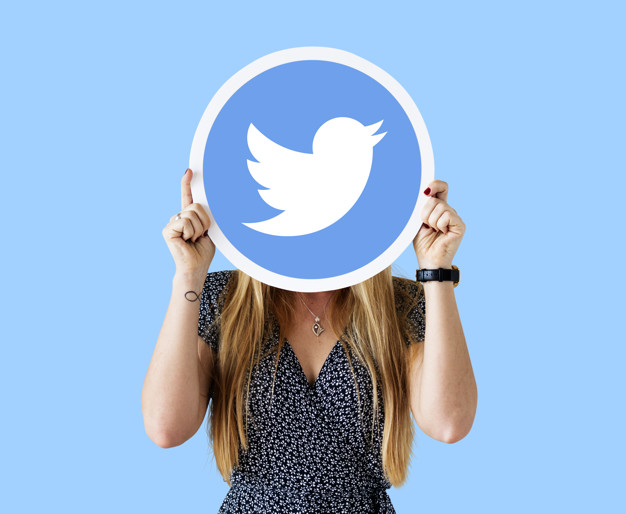
Twitter would not track “reach,” so the issue of reach vs. experiences is a bit more clear. Twitter describes an “impression” as either in its feed, search results, or as part of a chat, every time a Twitter user sees one of your tweets.
Let’s presume you have 1,000 followers, and your new tweet is seen by every one of them (or ad). That indicates that 1,000 impressions were obtained by tweet. Now let’s presume your answer with another tweet to that tweet. Your fans, along with your comment, will see the original tweet again. For a total of 3,000 total impressions, that will lead to an additional 2,000 impressions.
It’s important to note that there would be a dramatic impact on the total amount of views per tweet on the way you use the app. Responses to other people’s tweets will always get far fewer views than tweets you share in the news feeds of your fans. So if you spend a lot of time reacting to people on Twitter, your metrics could bias down the number of impressions per tweet registered.
Snapchat
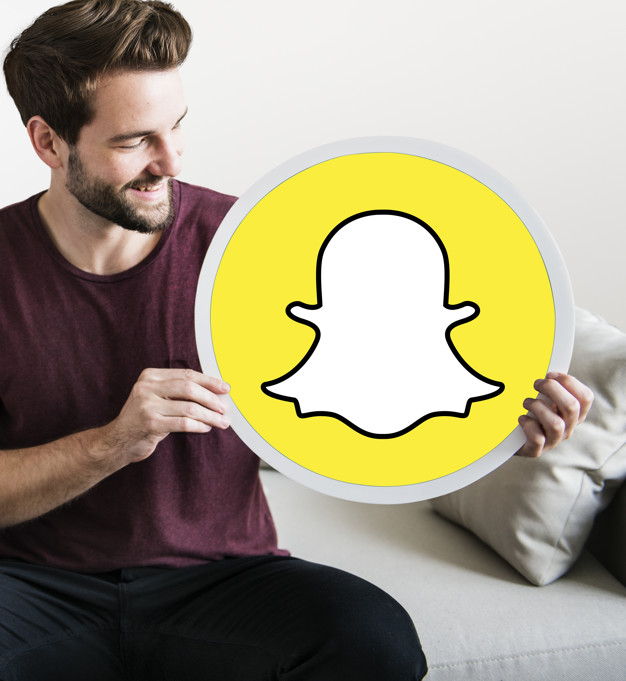
Snapchat, the visual networking platform, has become an ever-growing social media outlet for both young people and businesses.
Users will send photographs and videos (snaps) via the chat app, which then vanish after viewing. Attach these snaps to the story, and for 24 hours, they will be viewable. And here’s where corporations will be featured.
Snapchat posted its Q2 success figures last month, which revealed a 17 percent rise in daily active users year on year. These active consumers accounted for a record 238 million. This í such a potential land your ad makers to launch any campaign in this platform.
Snapchat has invested some time reviewing its viewer reach module based on this launch, which helps consumers gain a more detailed understanding and detail of regional viewership numbers. This latest update may play a crucial role in your company’s Snapchat marketing strategy.
As Snapchat’s daily users are continually on the rise, making the app more available to these users has become part of its key goal. For Snapchat, this is a move in a new direction, which moves them further from their initial strategy.
Snapchat revealed in 2016 that, relative to other social media sites, it purposely made the product somewhat ‘difficult’ to use to preserve its level of exclusivity. However, as the app was more business-focused (as we have seen in other social media platforms), a transition had to occur, and the app was made more user-friendly and accommodating.
As the importance of premium content has increased, Snapchat has had to make this area of its site the best it can be for both organizations and end users.
Given its recent development, it demonstrates that Snapchat will draw more users and allow companies on the site to target a much broader audience-win, win! By understanding what is reach in marketing and Snapchat reach, the potential in this platform will useful for the segmented marketplace.
Google Adwords
Ad reach is an estimation of the number of persons, based on signed-in users, within a location set.
To get a rough estimate of how many individuals your advertising could reach within a geographic region, you can use the given reach numbers.
With reach, you can predict how many clients in Michigan or Montana can see your advertising, or compare the number of people in Detroit and Ann Arbor who may see your ad. To determine if you have targeted the correct areas, or whether you need to pick other areas that might provide the right amount of exposure, you will use those calculations.
You will find that certain places have limited coverage, which means that there may be a more limited audience for commercials targeting these areas.
Reach of Google Advertising is based on an estimation of the number of individuals within the specified geographic area shown on Google assets. Therefore, due to a variety of variables, you can note that reach numbers in Google Ads can differ substantially from census population statistics or other sources, including:
- The per-person number of accounts used
- Amount of interim travelers to a geographical area
- Length of time that each user spends on a website
- Amount of Users Signed-In
- Check partner or Google Show Network visits that are not included in calculations of reach numbers
You might see a “Limited reach” alert in Google Advertising for certain places. Small scope ensures that we cannot connect individuals by their Internet Protocol (IP) addresses with a chosen geographical area. Possible explanations include a limited number of location users or the efficiency of the location mapping IP.
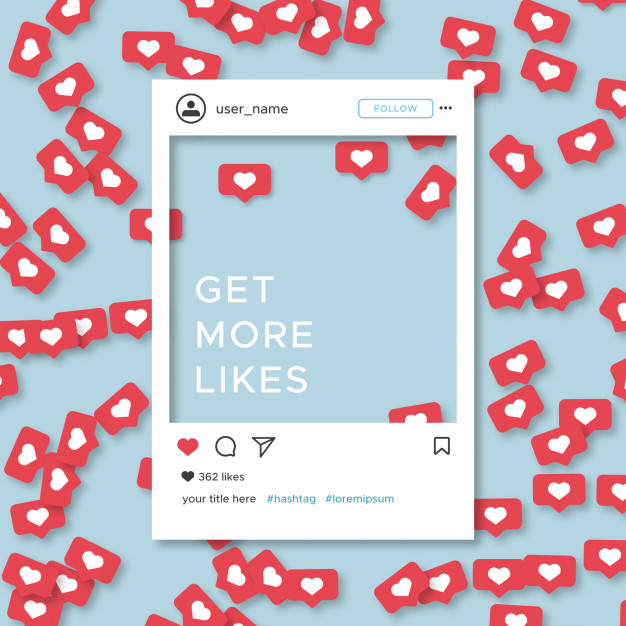
Instagram gives you the ultimate medium for posting a range of picture or video material and engaging in new ways with your followers.
Among the highlights covered in our round-up of primary marketers’ IG stats are:
- 1 billion daily monthly users
- Instagram is used by about two out of every three people aged 18-29.
- A corporation is followed by 80% of the accounts
- 2 million advertisers on a monthly basis
- Weekdays between 10 A.M. are the perfect times to publish. 3 P.M.
Instagram Reach: The number of unique users on any given day who have seen your Instagram post or story
If you put some serious spending behind your Instagram posts, you certainly won’t get your content viewed by every single one of your fans. And it’s impossible, even with some serious investment, that you can hit any of your fans. That’s why scope is crucial. Reach shows you how the content is served by several new people every day. To boost brand recognition, aim to optimize this measure.
Instagram Stories have been a fantastic addition to the arsenal of content arms of social advertisers, most importantly for the various ways in which you can interact. Along with that, you’ll want to make sure you keep track on story-specific terms related to crucial metrics.
Why is reach important in marketing?

Measuring market penetration helps you to make better business choices and accurately use your money. After you got the answer for the question what is reach in marketing, you also need to know why you need them.
You are able to mitigate threats
Knowing how many clients you can meet helps you to make better choices on where your money is invested. This minimizes the risk of overspending on unsuccessful ads and allows you to build campaigns with a profitable return on investment (ROI).
You’re prepared to prepare accordingly
If you know how many prospective new clients you can meet, you will make sure that you have enough goods to offer payment or human resources. It will also help you manage seasonal marketing promotions and understand how the demand shifts over a year.
Your messaging can be fine-tuned
You should change your vocabulary and tone to cater to them specifically because you know just who you are referring to and trying to draw. his helps you create content that is more powerful than creating generic ads that appeal to everyone.
Your ‘effective frequency’ to find out
It is impossible to compare impressions to reach, since impressions (by definition) would either be equal to or greater than reach. You would have seen your content at least once with any person included in your scope list, and most probably have seen it several times. For how many times?
To find it out to get the average number of impressions per person, we divide total impressions by total reach. (People interchangeably call this “ad frequency,” “frequency,” or “average impressions per user”.)
So how nice are the average experiences per user?
Many brand recognition analysis shows that consumers would have seen an ad at least many times before they start to become aware of the brand. This is referred to by marketers as the “effective frequency,” the number of times someone sees an ad before responding to it.
Herbert E. Krugman of General Electric indicated that three exposures are adequate to make someone aware of the brand. London businessman Thomas Smith suggested back in 1885 that it would take twenty.
The productive frequency for your organization would most likely be extremely unique to your business and product. Try to have some insight into what rivals are looking for in your room if you want to feel what a fair impression per user count is.
Stop ‘Ad exhaustion’
It is also essential to find out your ‘efficient level’ because it shows you how many times people will see your ad before they get irritated.
Too many experiences are too many per person would depend solely on the priorities of the social media. An in-your-face advertisement with lots of views per customer is obviously not the way to go if you want to develop brand recognition in a small niche steadily.
Although if you have a time-sensitive campaign and are trying to show it to as many users as possible, it might be a reasonable objective to have a high experience per user count.
What’s the difference between reach and impressions?

What is the distinction between reach and impressions exactly? About which one do you pay attention? For your social media ads, understand what these words mean.
On multiple sites, reach and experiences mean distinct things. Twitter used to refer to what Facebook calls “impressions” as “reach,” for instance. But they define two definitions in general:
The cumulative number of users who have seen your ad or material is alluded to by Reach. If a total of 100 individuals have seen your ad, that means the scope of your ad is 100.
Impressions refer to the number of times on a television your ad or content has been viewed. Let’s assume that your ad from the previous example came up a total of 300 times on those people’s screens. For that ad, that means the number of impressions is 300.
To explain how each measure functions, let’s look at how the two concepts are described by each main network, here we only mention Facebook and Twiiter as significant examples.
Facebook reach vs. impressions
“Reach” is officially defined by Facebook as the number of individuals who have seen your ads at least once It organizes reach into three categories: organic, paying, and viral.
Organic reach refers to the amount of special individuals in the Facebook News Stream who have seen your content organically (for free).
Paid reach is the number of users who have seen a piece of material paid for, such as an ad, on Facebook. Factors such as ad bids, budgets and viewer targeting also specifically influence it.
Viral reach is the number of users who have seen the material since it has been communicated with by one of their peers.
Reaching on Facebook varies from the impressions that Facebook describes as the number of times your ads have been on the screen.” During the campaign period, a unique user could see a post three times in their feed. That would have counted as 3 impressions.
Neither “reach” nor “impressions” mean that your ad has really been clicked on or even noticed by anyone.
Facebook also states that a video is not necessary for the impression to be counted to start playing.” A simpler way to put it would be to calculate the amount of times your videos may have been viewed by impressions.
So how do we know if all of the “reach” or “impressions” we get are real in fact? Facebook splits experiences into two groups to address this question: “served” and “viewed.”
When an ad is “served,” it basically means that the ad was paid for and that the machine wanted to send the ad somewhere (to the top of a highly-visible news feed, an ad box in a sidebar, etc.).
“Served” advertisements do not need to appear on the screen (as Facebook puts it they could stay “under the fold”) or even finish making to qualify as a “served” experience. In the other hand, “viewed” experiences don’t count until the user sees the ad appear on their computer. The ad does not count as “viewed” if the user doesn’t scroll to see the ad, or navigates away from the website until it loads.
Twitter reach vs. impressions
Twitter would not track “reach,” so the issue of reach vs. experiences is a bit more clear. Twitter describes a “impression” as either in its feed, search results, or as part of a chat, every time a Twitter user sees one of your tweets. Therefore, finding out what is reach in marketing may face several obstacles.
Let’s presume you have 1,000 followers, and your new tweet is seen by everyone of them (or ad). That indicates that 1,000 impressions were obtained by tweet. Now let’s presume you answer with another tweet to that tweet. Your fans, along with your comment, will see the original tweet again. For a total of 3,000 total impressions, that will lead to an additional 2,000 impressions.
It’s important to note that there would be a dramatic impact on the total amount of views per tweet on the way you use the app.
Responses to other people’s tweets will always get far less views than tweets you share in the news feeds of your fans. So if you spend a lot of time reacting to people on Twitter, your metrics could bias down the amount of impressions per tweet registered.
Conclusion
Reach will even inform you if the advertisements have something wrong with them. If the ads have reached a lot of people successfully, but there is limited conversion, either the copy/visual or even the landing page could be incorrect. If you’re concerned that the same material would overpower your audience, then you may want to work on growing your reach.
On the other hand, tracking perceptions can help you appreciate what type of material is shared the most. If there are few or even no experiences with your content, you should consider enhancing your content.
As a digital marketer, knowing what is reach in marketing is essential for you and to maximize conversions and profits for your company.
New Posts






